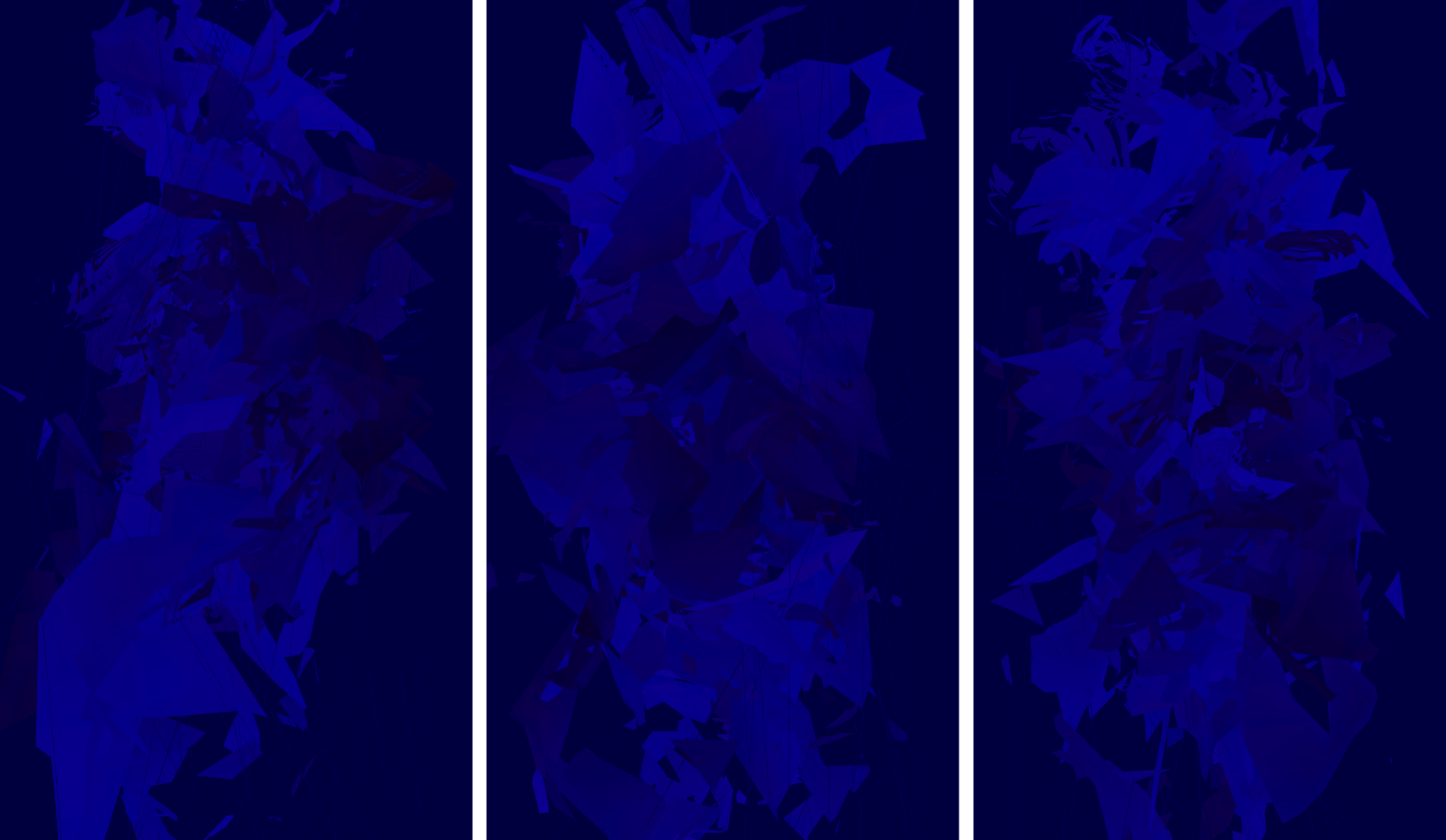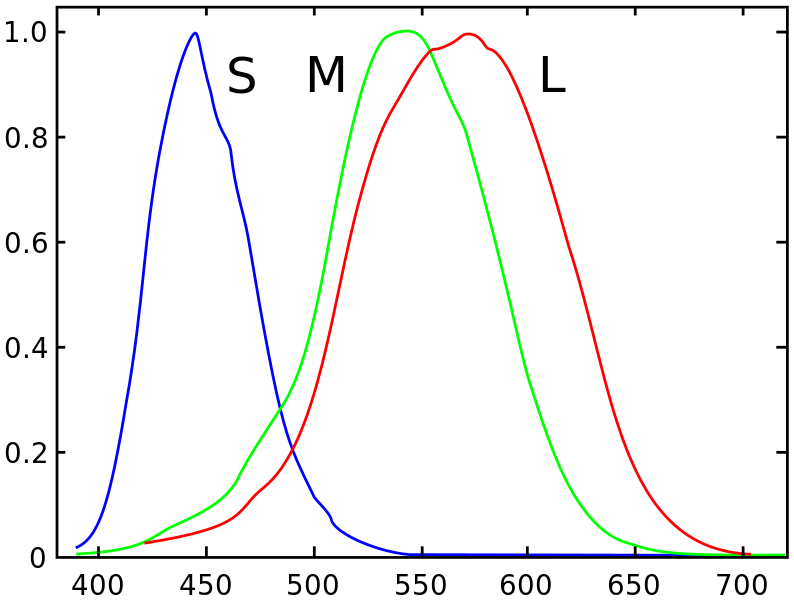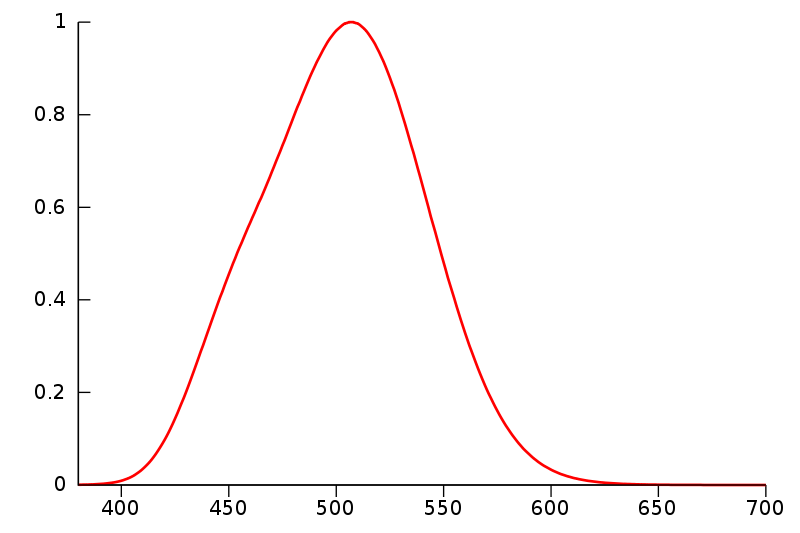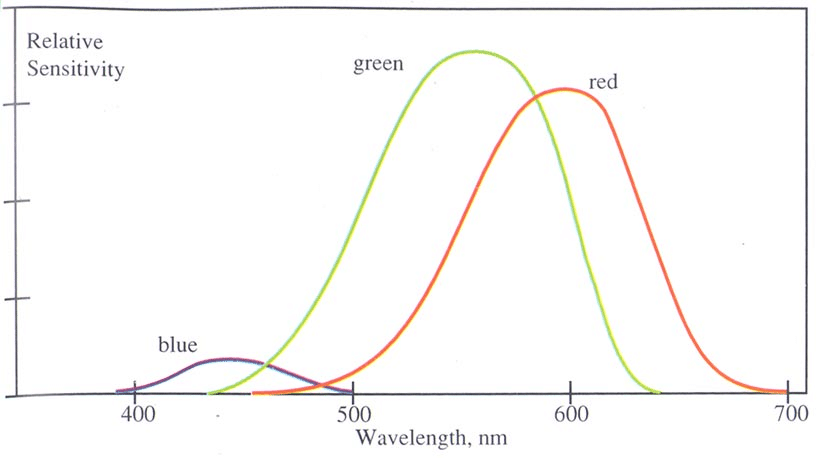
Support is an abstract piece for which you have to adapt your senses in order to experience it fully. In most situations, we spend very little time studying things around us in depth and paying attention to details. I wanted to create an art piece which would force you to look at it for a while, in order for details to start coming out. You would have to give it your full attention. But how?
Ingredient #1 – Spectral Sensitivity
Our eyes are imperfect instruments. Even though we can perceive millions of colors, the sensitivity of the eye varies in the light frequency spectrum significantly. We have three types of cone cells in our eyes, each responsible for a different part of the color spectrum. Their normalized sensitivities are shown in the graph below.

As you can see, the S cone cells which are most responsible for blue color perception have very little overlap with the other two receptor types (M - green, and L - red) below around 500 nm of wavelength. They are on their own.
However, our eyes have another type of receptor responsible for low-light vision – rod cells. They are most sensitive to light with wavelengths around 500 nm, which the graph below shows. The maximum spectral sensitivity of the human eye under daylight conditions is at a wavelength of 555 nm, while at night the peak shifts to 507 nm Spectral sensitivity, Wikipedia. . This means that during daylight we are more sensitive to the red-green part of the spectrum, while at night the sensitivity shifts toward blues.

And finally, the graphs above are normalized response graphs – S (blue) cone cells are actually much less sensitive than the M (green) and L (red) ones:

(Fun fact: this is why head-up displays in fighter jets are green.)
So in order to trigger better shape recognition of S cone cells, we need to give them support. Rod cells are perfect for that since their sensitivity spectrum lies almost exactly between the peaks of S and M cells’ spectra.
Ingredient #2 – Low-light Adaptation
The eye takes approximately 20–30 minutes to fully adapt from bright sunlight to complete darkness and becomes 10,000 to 1,000,000 times more sensitive than at full daylight Adaptation (eye), Wikipedia. . In other words, in order for rod cells to “kick in”, the environment needs to become darker and you need to give your eyes some time to adapt.
If you’re viewing the image below on a bright computer screen, you probably cannot discern any details except for large smudges of blue color. However, try downloading it and opening it in an image viewer application, with a dark background. Try turning off the lights in your room. After a couple of seconds, you will begin to see the details.

Just like rod cells giving support to blue cone cells, support in real life takes time and dedication. I hope this piece will make you question the quickness of your reasoning, and make you slow down and appreciate the details.